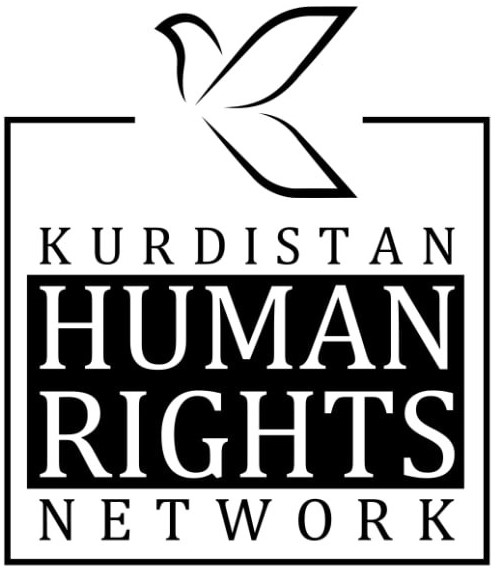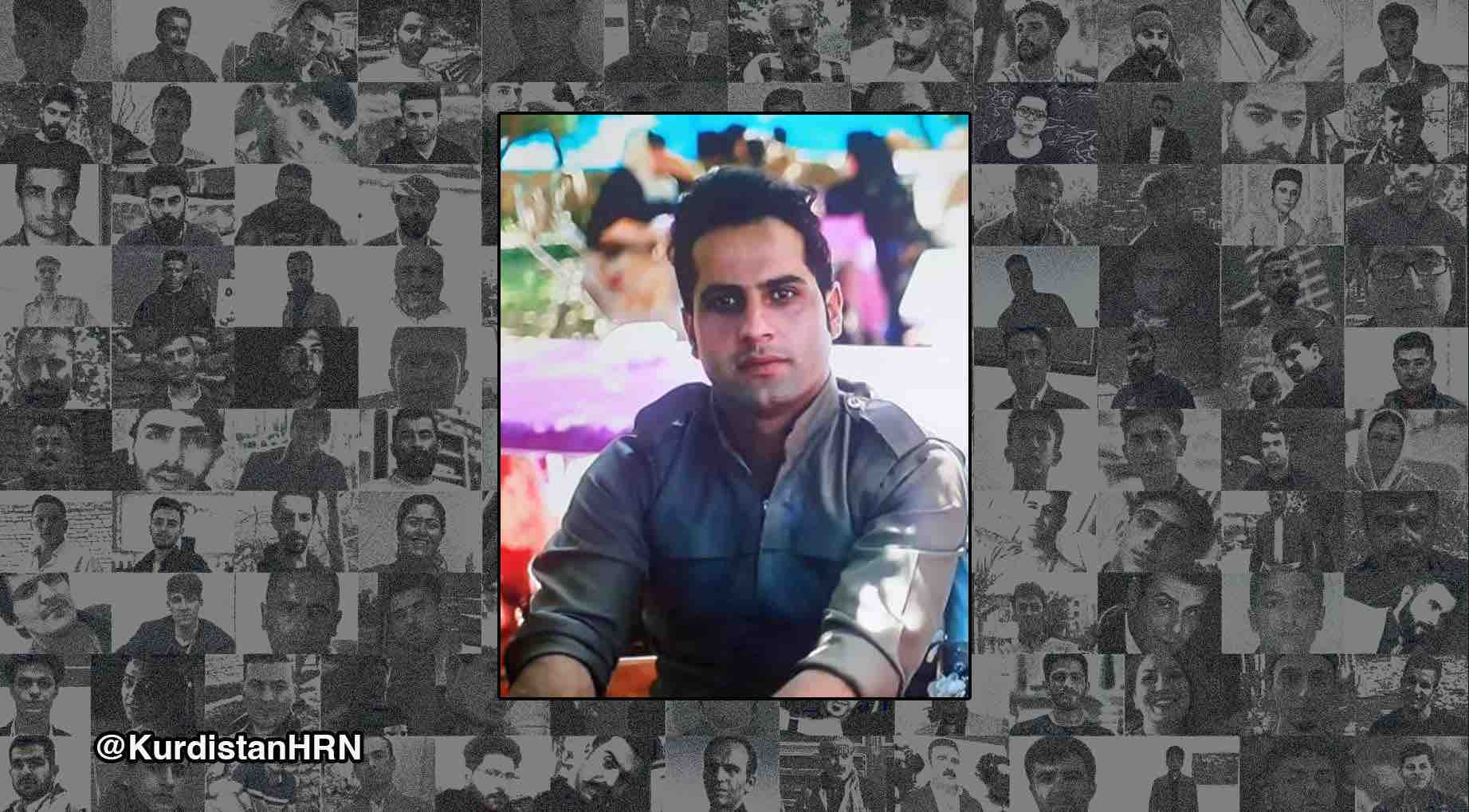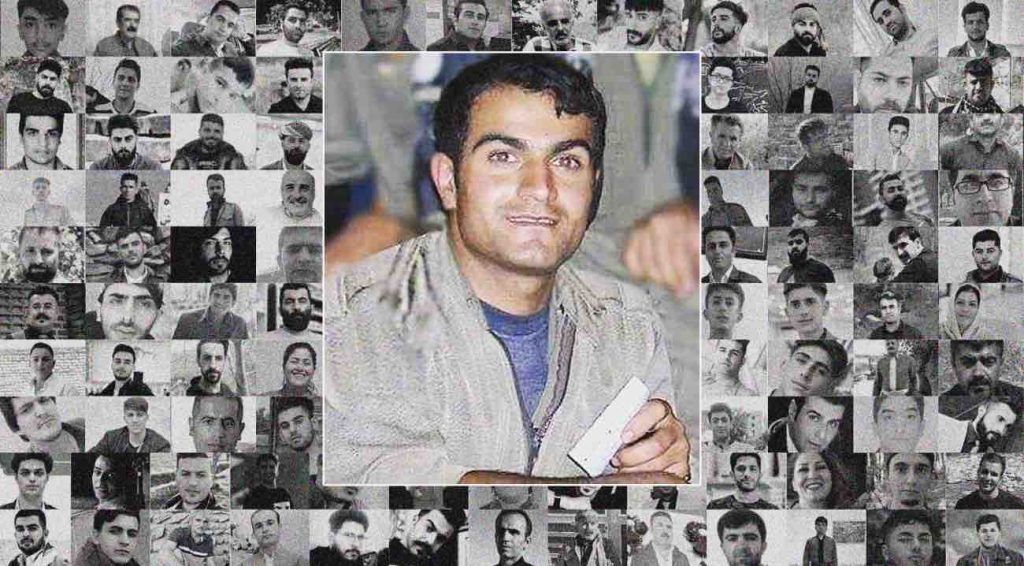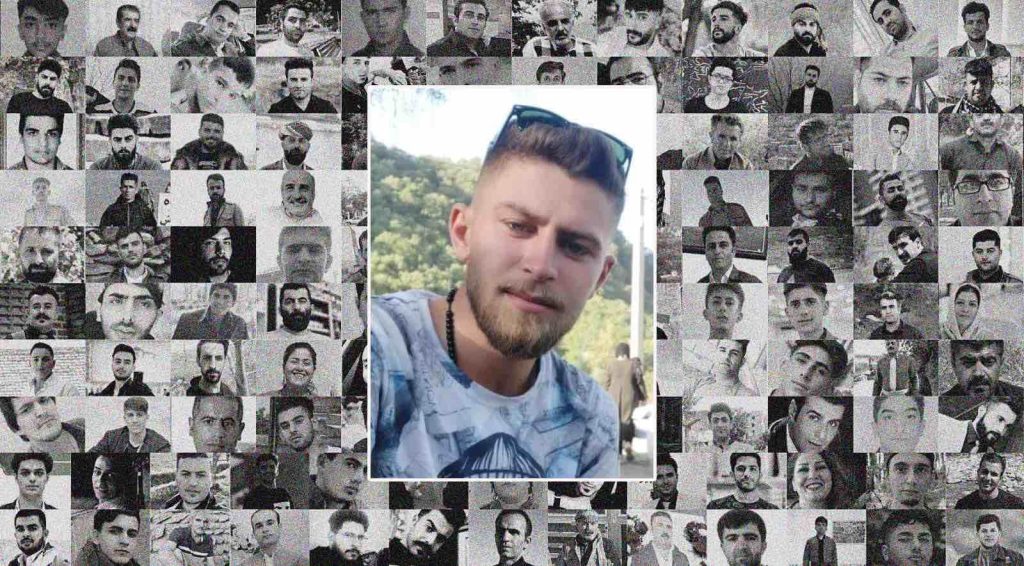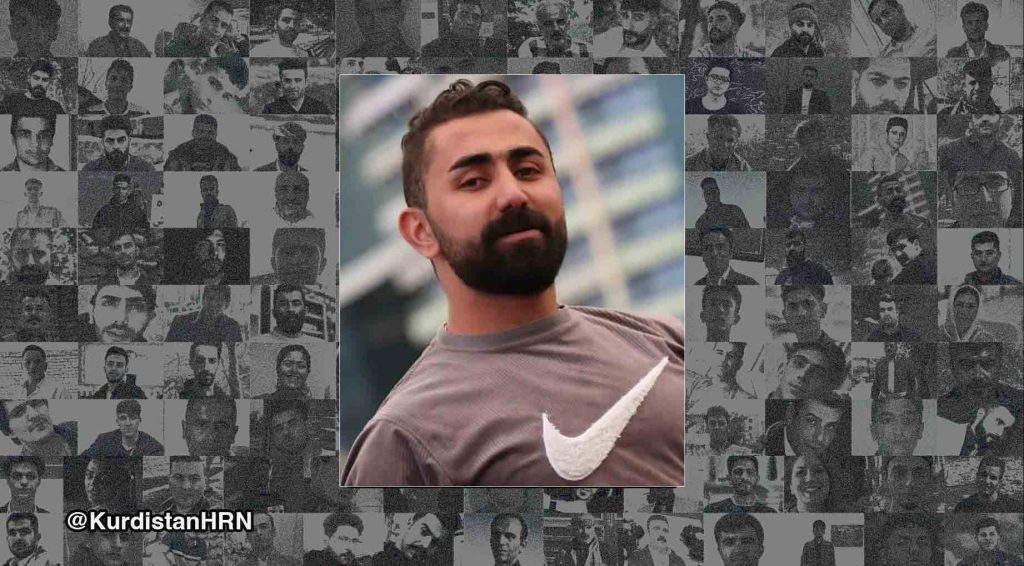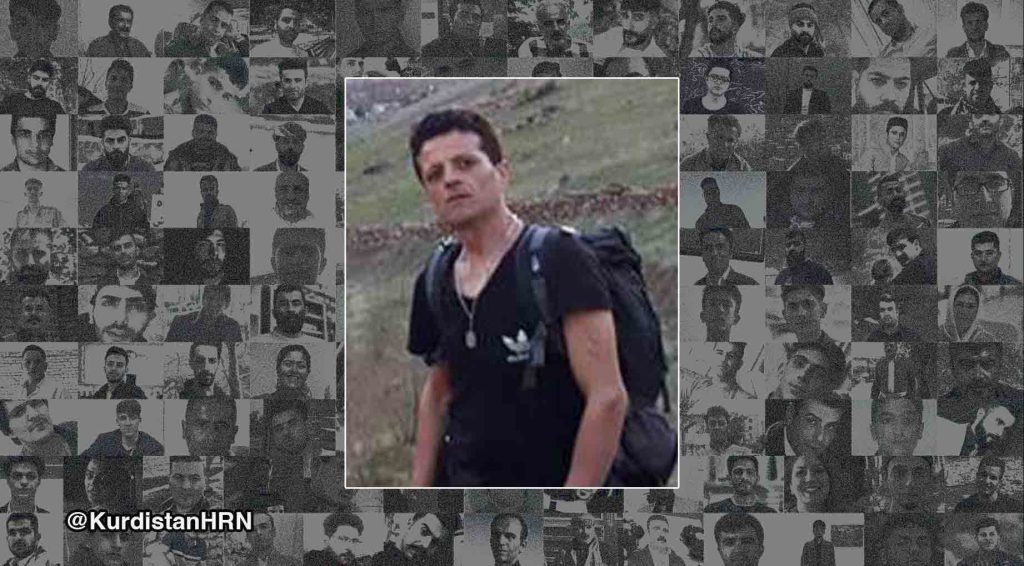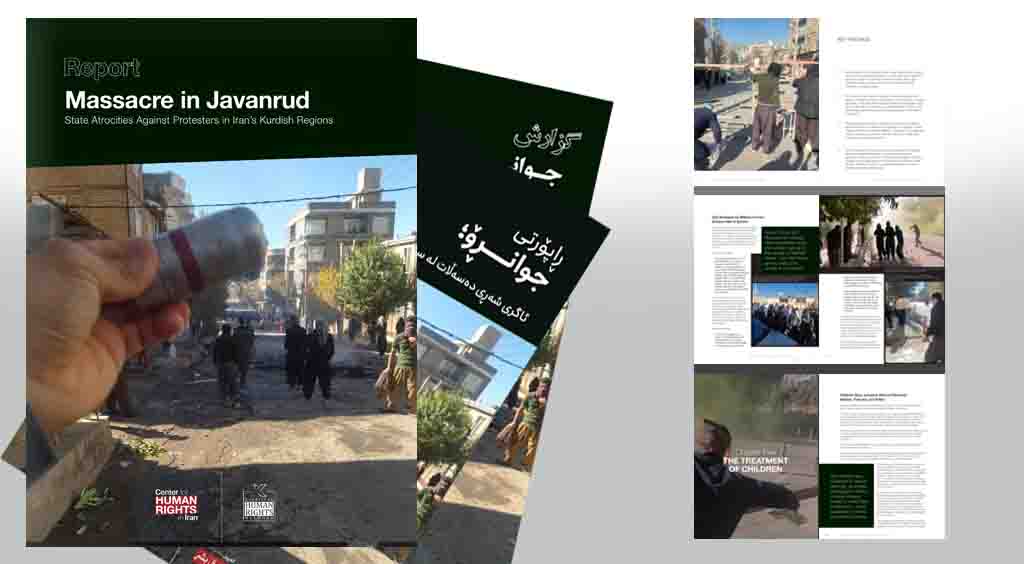Joint Description of the Kurdistan Human Rights Network (KHRN) and the Abdorrahman Boroumand Centre (ABC): This file is part of the joint documentary efforts of the Kurdistan Human Rights Network (KHRN) and the Abdorrahman Boroumand Center for Human Rights in Iran (ABC). KHRN intends to document cases of extrajudicial executions related to Kurdish civilians and activists over time. For this purpose, it has utilized the research experiences and methodologies of ABC, which has been active for years in documenting extrajudicial executions and other human rights violations in Iran. The reports on this case and subsequent reports will be published in the Documentation section of the KHRN’s website and ABC’s Omid Memorial. Some of the interviews used in this documentation, as well as supplementary interviews, have been conducted by ABC, some by the KHRN, and some collaboratively.
Information related to the case of Mr. Yahya Rahimi (Sarab Shahraki), son of Ahmad Rahimi and Ghadamkheyr Mirzaei, has been obtained through interviews conducted by ABC with one of Rahimi’s family members (May 9, 2023) and an eyewitness (March 20, 2023). To complete the information for this case, sources including Fars News Agency (October 8, 2022), IRNA News Agency (December 1, 2022), ISNA News Agency (December 1, 2022), Radio Zamaneh’s website (October 25, 2022), BBC Persian (December 10, 2022 and September 4, 2023), Radio Farda (November 1, 2022), and the website of Human Rights Watch (September 19, 2022) have been used.
Mr. Yahya Rahimi, a Sunni Kurdish civilian, was born on November 30, 1991 in the city of Sanandaj, Kurdistan Province. He was 31 years old, having completed education up to the third year of middle school, and he had been working as a tile worker since 2016 (ABC interview, May 9, 2023). His parents were farmers (BBC Persian, December 10, 2022). Mr. Rahimi was married, and one year had passed since his marriage. A year before being killed, despite facing financial difficulties and even the need to work in the Kurdistan Region of Iraq, he managed to save money and start a life together with his beloved partner (ABC interview, May 9, 2023).
Mr. Rahimi and his wife were living in a rental residence in the Nanaleh district on the outskirts of Sanandaj. They had aspirations to build their own home on a piece of land they had purchased (ABC interview, May 9, 2023).
The Nanaleh district (Avraz neighborhood), where Mr. Rahimi resided until the last days of his life, is one of the densely populated peripheral areas of the city of Sanandaj, inhabited mainly by working-class families. This neighborhood was one of the main centers of protests during the 2022 uprising and was actively involved in street demonstrations for over two months without interruption (Joint research by ABC and KHRN).
According to one of Mr. Rahimi’s close acquaintances, he was a person who loved reading, especially Iranian history. He was a “protest-minded individual” who “wanted Iran to be a free, prosperous, and dignified country for its people.” According to the interviewee, he was never a member of any organization or group, but he did have grievances about the current situation and had participated in protests against gasoline price hikes in November 2019. According to one of his relatives, after work and upon returning home, he spent a lot of time following news and events in Iran (ABC interview, May 9, 2023).
One of Mr. Rahimi’s close acquaintances described him as a “selfless, kind-hearted, and cheerful person” (ABC interview, May 9, 2023).
2022 (Jina Mahsa Amini) Protest background
Nationwide protests were sparked by the death in custody of Ms. Jina Mahsa Amini, a 22-year old Kurdish woman, on September 16, 2022. Amini had been arrested by the morality police in Tehran for improper veiling on September 13 and sent brain dead to the hospital. The protests, which started in front of the hospital and continued in Saqqez County (Kurdistan Province) where Mahsa was buried, were triggered by popular exasperation over the morality patrols, misleading statements of the authorities regarding the cause of Mahsa’s killing and the resulting impunity for the violence used against detainees, as well as the mandatory veil in general. This protest, initially led by young girls and women who burned their veils and youth in general who chanted the slogan “Women, Life, Freedom,” rapidly took on a clear anti-regime tone, with protesters calling for an end to the Islamic Republic. The scope and duration of the protest was unprecedented. State efforts to withdraw the morality police from the streets and preventative arrests of journalists and political and civil society activists did not stop the protests. By the end of December 2022, protests had taken place in about 164 cities and towns, including localities that had never witnessed protests. Close to 150 universities, high schools, businesses, and groups including oil workers, merchants of the Tehran bazaar (among others), teachers, lawyers (at least 49 of whom had been arrested as of February 1st, 2023), artists, athletes, and even doctors joined these protests in various forms. Despite the violent crackdown and mass arrests, intense protests continued for weeks, at least through November 2022, with reports of sporadic activity continuing through the beginning of 2023.
The State’s crackdown was swift and accompanied by intermittent landline and cellular internet network shutdowns, as well as threats against and arrests of victims’ family members, factors which posed a serious challenge to monitoring protests and documenting casualties. The security forces used illegal, excessive, and lethal force with handguns, shotguns, and military assault rifles against protesters. They often targeted protesters’ heads and chests, shot them at close range, and in the back. Security forces have targeted faces with pellets, causing hundreds of protesters to lose their eyesight, and according to some reports women’s genitalia. The bloodiest crackdown took place on September 30th in Zahedan, Baluchestan Province, where a protest began at the end of the Friday sermon. The death toll is reported to be above 90 for that day. Many injured protesters, fearing arrest, did not go to hospitals where security forces have reportedly arrested injured protesters before and after they were treated.
According to reports from a human rights organization, at least 450 protesters were killed by fire from security forces during the protests, while thousands were wounded or arrested. In the twelve months after protests commenced, at least seven individuals were tried and executed in connection with the protests, without minimal standards of due process. Several others are faced with charges which could potentially result in capital punishment.
According to reliable published reports, a number of the families of killed protesters have been pressured by security bodies to record their slain loved ones as state forces, or to blame protesters for their deaths. In regions such as Kurdistan, security bodies have summoned some families to compel them to declare dissident Kurdish political parties responsible. Moreover, state media has reported that approximately 70 members of the security forces were killed in the protests.
Protesters, human rights groups, and the media have reported cases of beatings, torture (including to coerce confessions), and sexual assaults. Detainees have no access to lawyers during interrogations and their confessions are used in courts as evidence.
Public support and international solidarity with protesters have also been unprecedented (the use of the hashtag #MahsaAmini in Farsi and English broke world records) and on November 24, 2022, the UN Human Rights Council adopted a resolution calling for the creation of a fact finding mission to “Thoroughly and independently investigate alleged human rights violations in the Islamic Republic of Iran related to the protests that began on 16 September 2022, especially with respect to women and children.”
Background of the 2022 Protests in Sanandaj
Following the state murder of Jina Mahsa Amini on September 15, 2022, protests commenced at Jina’s funeral in her hometown of Saqqez and spread afterward to other cities in Kurdistan. Sanandaj was the first city where protesters turned out in solidarity with the people of Saqqez, and during the months-long duration of the “Women, Life, Freedom” uprising, various streets and neighborhoods in Sanandaj witnessed ongoing anti-government protests. Sanandaj was the city with the highest number of Kurdish citizens who lost their lives in the uprising – 22 of 125 total throughout Iran. State forces first killed protesters in this city on October 8, 2022. Repression of popular protests in Sanandaj was so intense that Amnesty International warned in an October 10, 2022 statement of “widespread dimensions of repression,” with state forces using weapons of war and firing at houses.
Extrajudicial Execution of Mr. Yahya Rahimi
Mr. Rahimi was shot and killed on October 8, 2022 inside his personal car (a gray Pride with license plate 399S136-Iran-51) amidst traffic on Sheshom-e-Bahman Street (Pasdaran) in Sanandaj.
Human Rights Watch, citing the testimonies of five witnesses regarding the events of October 8, reported that on that day “a small number of protesters gathered in Azadi Square, the city center of Sanandaj, and in neighborhoods such as Feyzabad, Qatarchian, and Sharifabad. They said that the police responded to the protesters with tear gas and shotguns and beating them with batons” (Human Rights Watch, September 19, 2022). The protests of that day began around 11:00 AM [all times are local] on the main squares and streets of the city, such as Eghbal (Azadi) Square, Sheshom-e-Bahman Street (Pasdaran), Ferdowsi Street, Adab Street, Sharifabad intersection, and Hassanabad Street, and continued throughout the day, spreading to other areas such as Baharan, Vilashahr, and Doshan neighborhoods (Radio Zamaneh, October 25, 2022).
In this regard, four witnesses informed Human Rights Watch that “security forces armed with rifles and shotguns fired tear gas into the traffic in several neighborhoods. A 30-year-old woman said she saw a policeman attacking cars and breaking windshields with a baton in the Sharifabad neighborhood near Pasdaran Street” (Human Rights Watch, September 19, 2022).
An eyewitness who directly witnessed the events leading up to the shooting of Mr. Rahimi said that groups of people had issued a call for a protest gathering around 11:00 that day. According to available information, during the days of the protests, the routes leading to the main squares of Sanandaj, especially Azadi Square, were blocked. However, the protest call for October 8 was scheduled for before noon, and due to the presence of banks, institutions, and government offices, it was not possible to block the streets at that time. According to the interviewee, this protest did not take place as planned due to the “heavy presence of government forces, a tense security atmosphere, and violent behavior of officers” at the scheduled time (ABC interview, March 20, 2023).
This witness said: “The officers were tightly controlling the movement of pedestrians and not allowing people to gather.” Between 12:00 and 12:30, officers attacked a group of woman pedestrians who were talking, including the interviewee, with tear gas and batons. This group of women who had gathered with the intention of participating in the protests decided to move to a different route after being beaten and assaulted by officers. “Meanwhile, cars were honking in protest,” according to the interviewee (ABC interview, March 20, 2023).
According to the eyewitness, in front of the Golha Complex on Sheshom-e Bahman Street, several drivers, including Mr. Rahimi, who had stopped due to traffic, honked their horns repeatedly as a sign of protest and solidarity with pedestrians who had gathered for a protest. Meanwhile, a group of plainclothes individuals, armed with sticks and clubs, attacked a black Pride vehicle, smashing its front window: “They hit it several times. The Pride did not stop, it sped away. A bit further down, we heard the sound of gunfire. I was looking, but I was at a distance. When we went forward, we saw that they had directly shot Yahya Rahimi in the head. The bullet had been fired from the side into his head.” The witness said that the first person who struck Mr. Rahimi’s car was “an officer in plainclothes wearing a white T-shirt” (ABC interview, March 20, 2023).
According to BBC Persian, quoting a “source informed of the events of that day,” on October 8, Mr. Rahimi “first briefly filmed the civilians’ protest with his mobile phone and then himself joined the protest by honking his car horn in solidarity.” According to this source, “One of the witnesses later came to see Yahya’s family. He said everyone was honking their horns. They only shot Yahya” (BBC Persian, September 4, 2023).
Mr. Rahimi was killed exactly in front of the Red Crescent pharmacy, slightly below the Golha Complex on Sheshom-e-Bahman Street. The exact reason for Mr. Rahimi’s presence at that location is not clear, but an informed source told BBC Persian, “He was on his way to work” (BBC Persian, December 10, 2022).
According to one of Mr. Rahimi’s acquaintances and based on details shared in videos related to this murder, the five individuals attacked Mr. Rahimi’s car. Four of them were armed with batons. Another person, wearing a cap, was armed with a Winchester rifle or shotgun. According to the interviewee, the attackers left the scene after the shooting (ABC interview, May 9, 2023).
An eyewitness in this regard stated: “Shortly after Mr. Rahimi’s murder, officers in military uniform arrived at the scene and took Mr. Rahimi’s body with them” (ABC interview, March 20, 2023).
One of the relatives, citing an eyewitness, said: “The person with the gun claimed after the shooting that Yahya had insulted Imam Khamenei” (ABC interview, May 9, 2023). Additionally, a source close to Yahya Rahimi’s family told Radio Zamaneh that after breaking the car’s windshield, “one of the plainclothes agents fired a Winchester [referring to a shotgun] at his head from a half-meter away” (Radio Zamaneh, October 25, 2022).
Videos published of the moments leading up to Mr. Rahimi’s murder on Sheshom-e-Bahman Street in Sanandaj support eyewitness accounts of his killing.
Only one pellet shot hit “his left temple,” but the damage was so severe that even some family members and close associates did not recognize him after seeing the images posted on social media (ABC interview, May 9, 2023).
According to one of the relatives, the family first became aware of his death through social media and by watching a video of Mr. Rahimi’s lifeless body lying behind the wheel of his personal car, drenched in blood. His family simultaneously searched hospitals and informed his father, who lived in a village, that Mr. Rahimi had been injured. However, when his father, along with other family members, went to the Ministry of Information office, officials informed him of his son’s murder without considering his prior lack of knowledge (ABC interview, May 9, 2023).
In the burial permit issued on October 9, 2022, the cause of Mr. Rahimi’s death is listed as “extensive brain tissue damage, skull fractures, cranial bone shattering, and high-velocity projectile impact.”
Mr. Rahimi’s burial took place in the middle of the night on October 9, with a limited number of family members in attendance, under tight security measures at Behesht-e Mohammadi cemetery in Sanandaj. According to one of his relatives, the Rahimi family had hoped to bury him in his hometown but was not allowed to do so by intelligence agents. The final mourning ceremony for Mr. Rahimi was held at his family home and, despite the written undertakings signed by the family and pressure imposed on them, a significant number of relatives, acquaintances, and people from Sanandaj attended (ABC interview, May 9, 2023; Radio Zamaneh, October 25, 2022). During the burial, numerous plainclothes and armed security personnel were present. On November 17, the 40th-day memorial ceremony for Mr. Rahimi, which coincided with the first anniversary of his marriage, turned into a large anti-government protest (BBC Persian, September 4, 2023). Three protesters, identified as Peyman Menbari, Aram Habibi, and Shaho Bahmani, were killed during the protests on the same day (KHRN and ABC sources).
Officials’ Reaction
Iranian government officials confirmed Mr. Rahimi’s murder on October 8 and labeled it a “project by disruptors to fake killings.” Sardar Ali Azadi, the commander of the provincial law enforcement in Kurdistan, denied the involvement of government forces in Mr. Rahimi’s murder, saying: “At 12:30, a driver in a Pride car was killed while passing through a group of disruptors in Shahid Taarif Street, Sanandaj. This individual was killed by anti-revolutionaries with a gunshot as part of the project to fake killings, while my colleagues do not have any firearms during their missions” (Fars News Agency, October 8, 2022).
When the Rahimi family went to the deputy prosecutor’s office in Sanandaj to claim their son’s car, judicial authorities, specifically the deputy prosecutor, claimed that Mr. Rahimi had been “killed by Ramin Fatehi**,” without presenting evidence. Mr. Fatehi was a Sanandaj resident whose lifeless body was delivered to his family for identification five days after Mr. Rahimi was killed.
According to Mr. Fatehi’s family, he was tortured and killed. Nevertheless, this judicial authority, referred to as Mrs. Roghayyeh Fattahi, has repeatedly told Mr. Rahimi’s father, “Your son’s killer was a member of the Komala” (Radio Zamaneh, October 25, 2022).
According to one of the relatives, government authorities made claims about Mr. Rahimi’s involvement with the Basij militia, but his father, Mr. Ahmad Rahimi, publicly denied these allegations. He stated, “Other than the government subsidies, nothing else has come to Ahmad Rahimi’s home in Sarab Shahraki, and my son, who has been martyred, was not a Basij member” (Radio Farda, November 1, 2022).
During the delivery of Mr. Rahimi’s body to his family, security forces presented documents to his illiterate father, pressuring him to sign these papers. The documents did not pertain to the funeral ceremony but rather imposed commitments such as “not informing the media, no crowding during the ceremony, no recitation of poetry, and not taking him to the mosque” (Radio Zamaneh, October 25, 2022). Similar commitments were extracted from other family members (ABC interview, May 9, 2023).
According to one of the relatives, security forces deleted the contents of all the cameras set up at the crime scene following Mr. Rahimi’s murder (ABC interview, May 9, 2023).
The relative added that 20 days after Mr. Rahimi’s murder, the Rahimi family sought legal assistance from a lawyer, but they were immediately threatened by intelligence agents to “watch out” (ABC interview, May 9, 2023; Radio Zamaneh, October 25, 2022). In November 2022, nearly two months after the murder of Mr. Rahimi in Sanandaj, Ebrahim Raisi, the then-President of Iran, made a sudden visit to Sanandaj (IRNA, December 1, 2022). Raisi aimed to “address the situation of families” and sought to meet with the families of the victims of recent protests, including Mr. Rahimi’s family. However, Mr. Rahimi’s family and many others refused to meet with this senior government official (ISNA News Agency, December 2, 2022; BBC Persian, December 10, 2022).
Family’s Reaction
From the early days following their son’s murder, Mr. Rahimi’s family tried to pursue the matter by approaching various institutions.
Mr. Ahmad Rahimi, the father of Mr. Yahya Rahimi, in an interview, called on international organizations to find his son’s killer. He said: “I do not want anything from the Islamic Republic. If I raise my voice, the Islamic Republic will kill me just like they did my son. What more do they want from me?” (Radio Farda, November 1, 2022).
The legal efforts of Mr. Rahimi’s family have not led to any resolution in practice.
Impact on the Family
The burial of Mr. Rahimi in the Behesht-e Mohammadi cemetery in Sanandaj, against the family’s wishes for burial in their hometown, has increased difficulties for Mr. Rahimi’s parents. A person close to the family said that Mr. Rahimi’s parents “have not spent a single night without tears since his murder” (ABC interview, May 9, 2023). BBC Persian reported from “an informed source” that “nearly a year has passed since Yahya’s death, but Ghadamkheyr, Yahya’s mother, and Ahmad, his father, continue to mourn for their young son. His parents were very attached to him. The family says that as long as they are alive, they must live with this same lump in the throat, longing, and anger” (BBC Persian, September 4, 2023).
According to an informed source, Mr. Rahimi’s wife is also in a very difficult state. In addition, his brothers and sisters have tried to prevent their parents from seeing the footage of his killing in the car since their mental and physical condition is by no means suitable. “They cannot take seeing this footage, they do not have a mobile phone, and they do not turn on the satellite TV to avoid accidentally seeing this scene” (Radio Zamaneh, October 25, 2022).
A source close to the family told BBC Persian: “They sold their house because of their mother and moved to another neighborhood. Because their mother used to hold the door handle day and night, saying, ‘My dear Yahya, when did you last place your hand on his handle?’ She would kiss the stairs and say, ‘This is where Yahya used to walk'” (BBC Persian, December 10, 2022).
——————————
